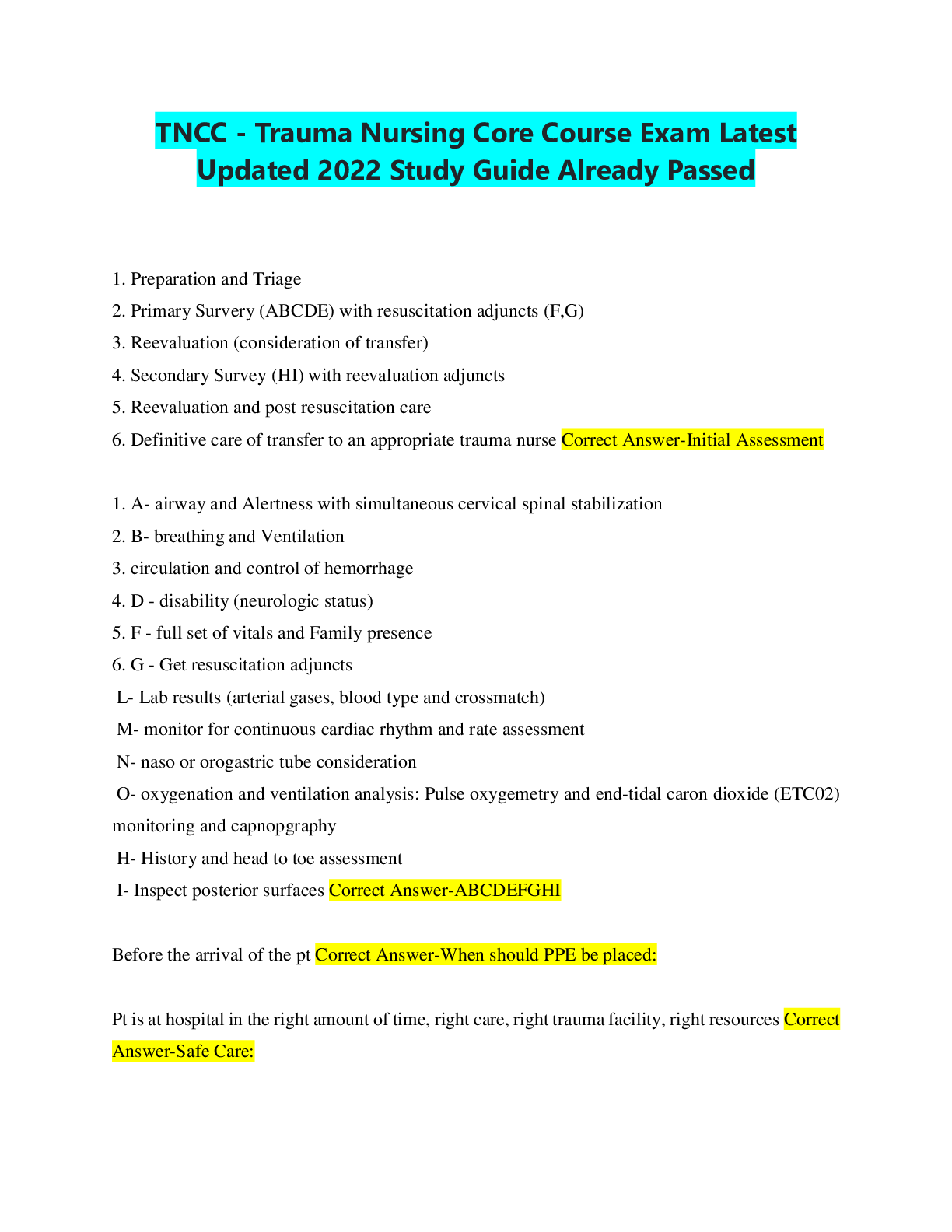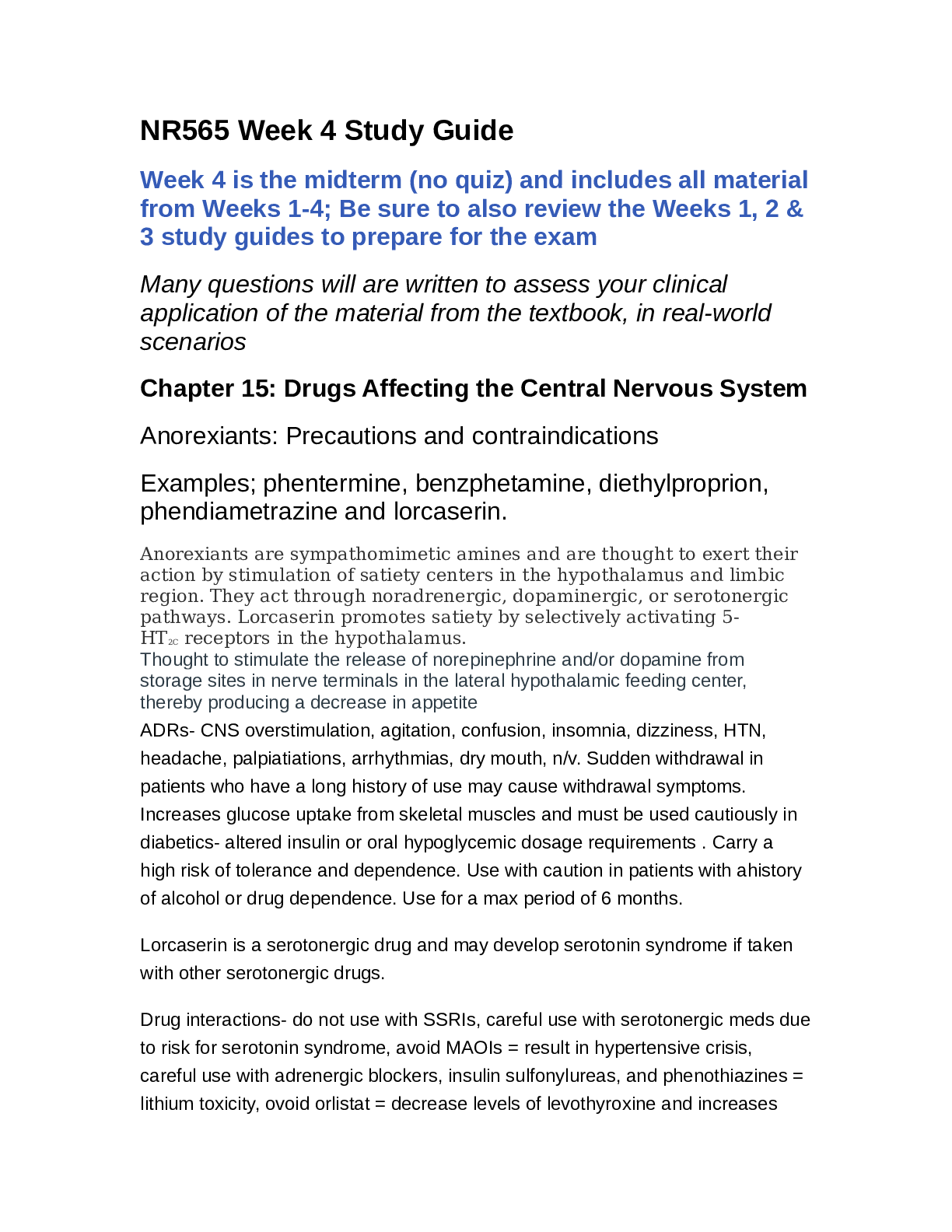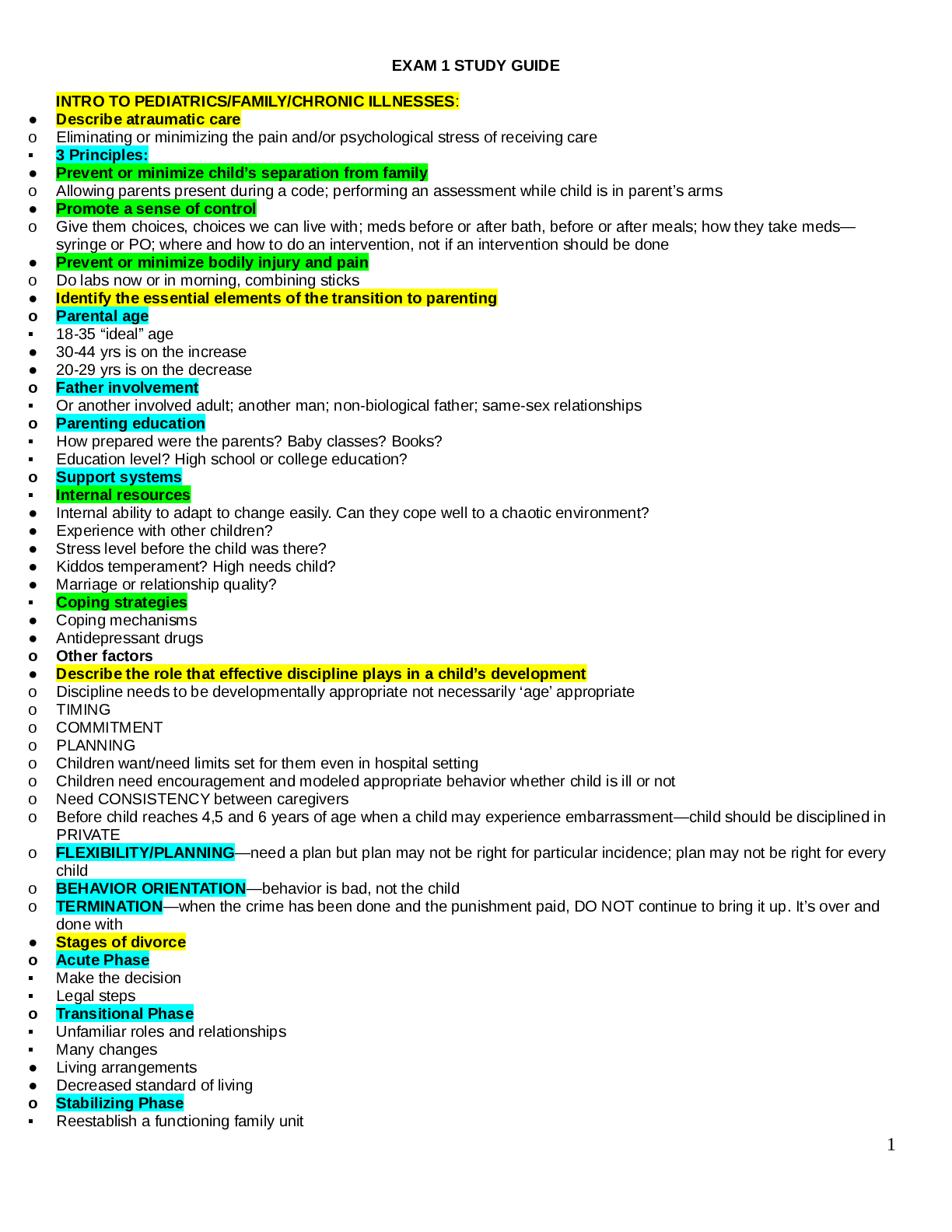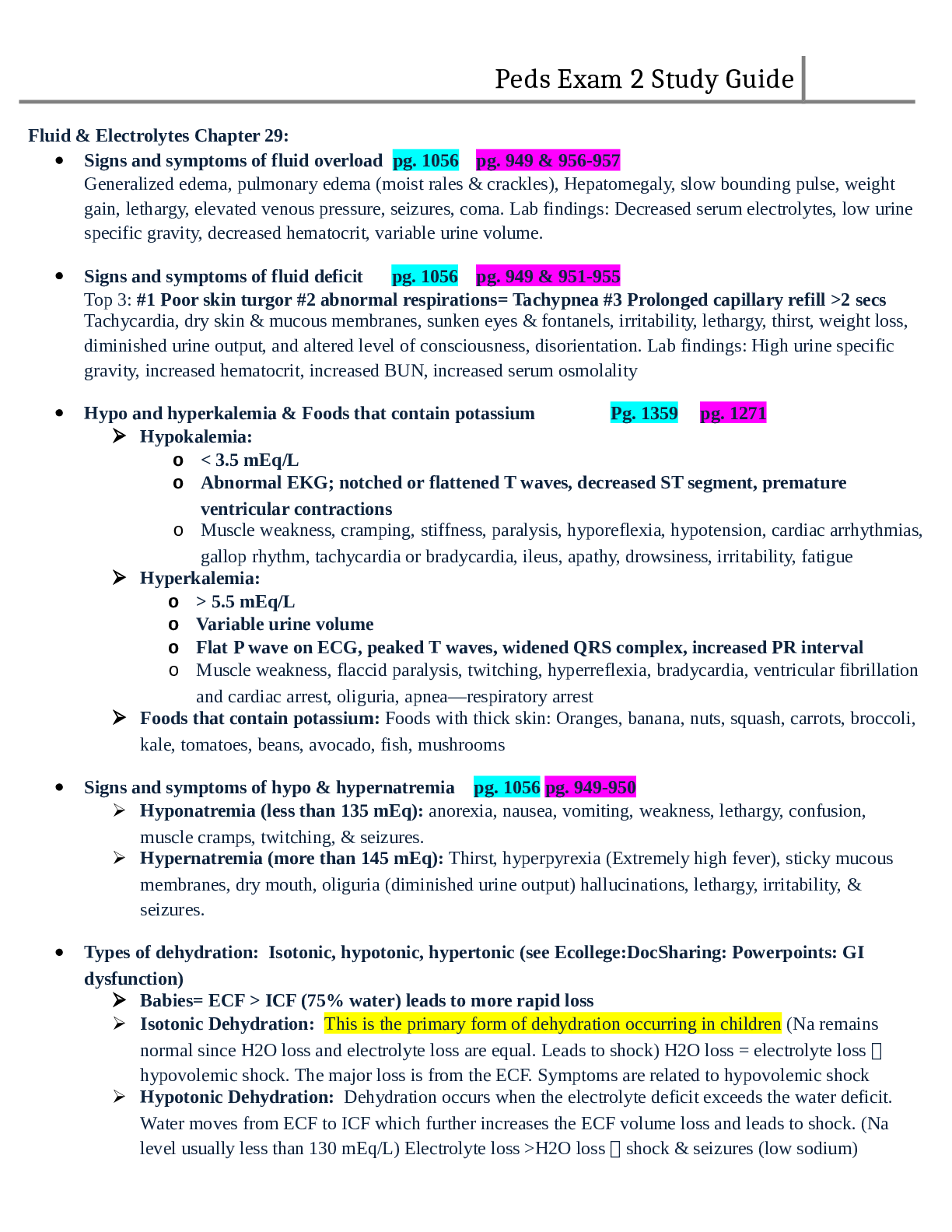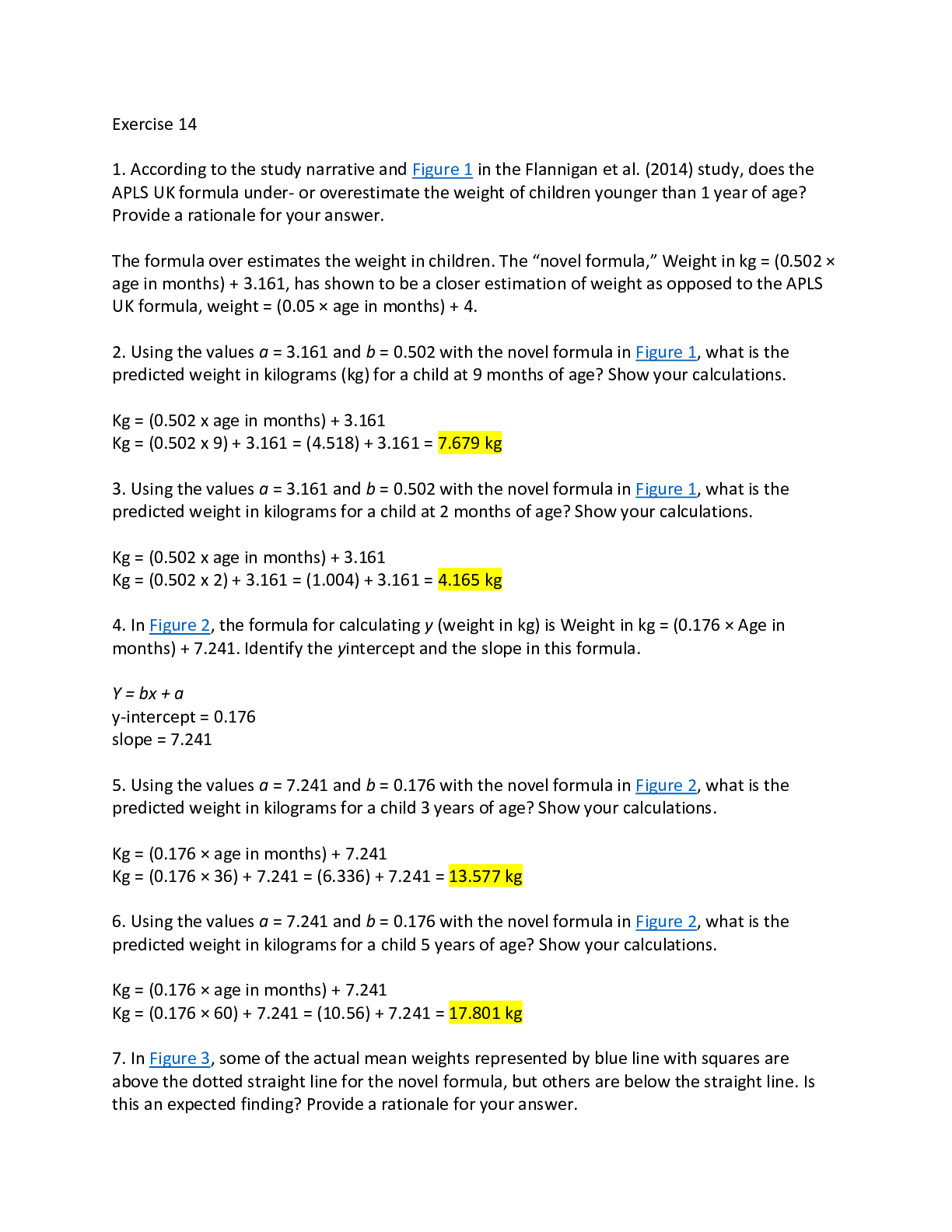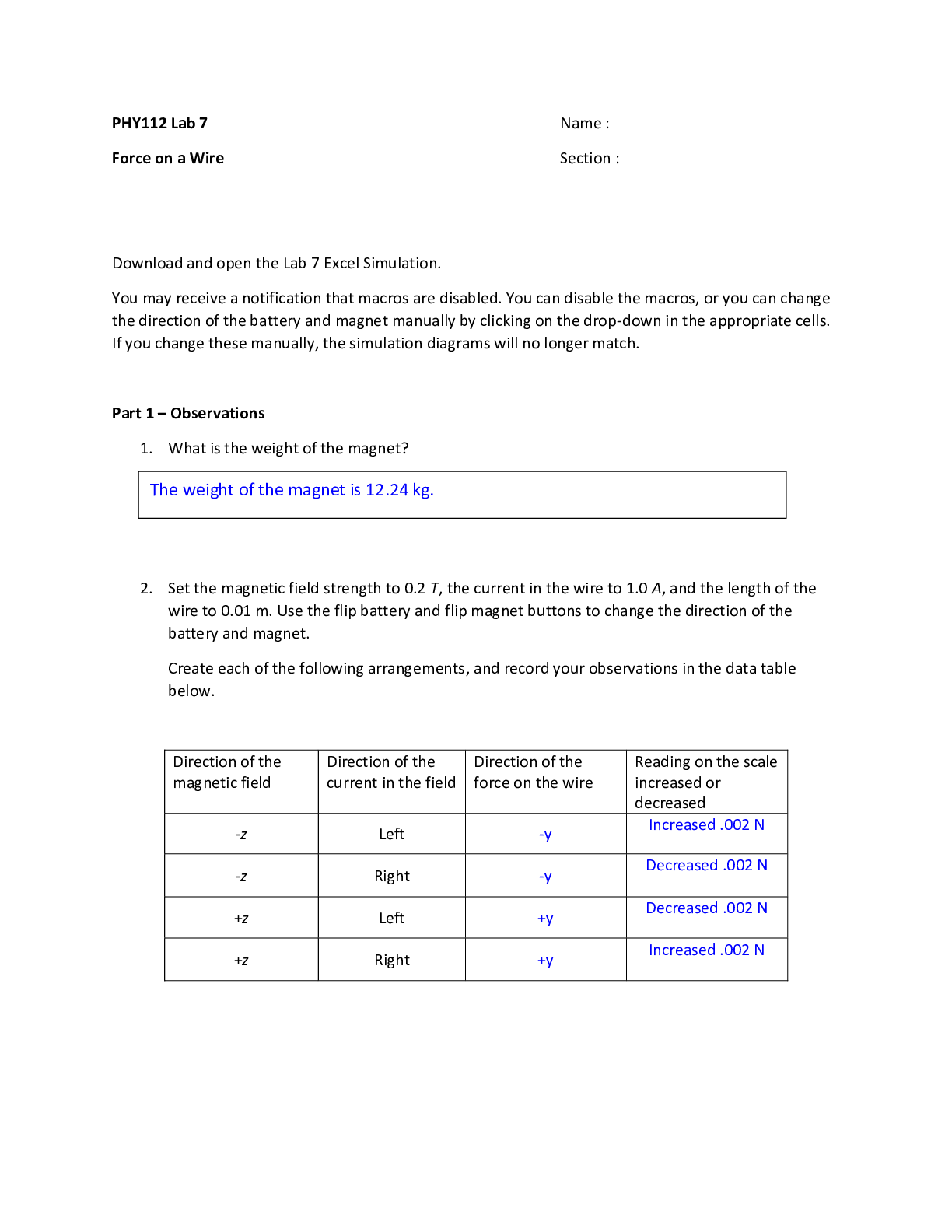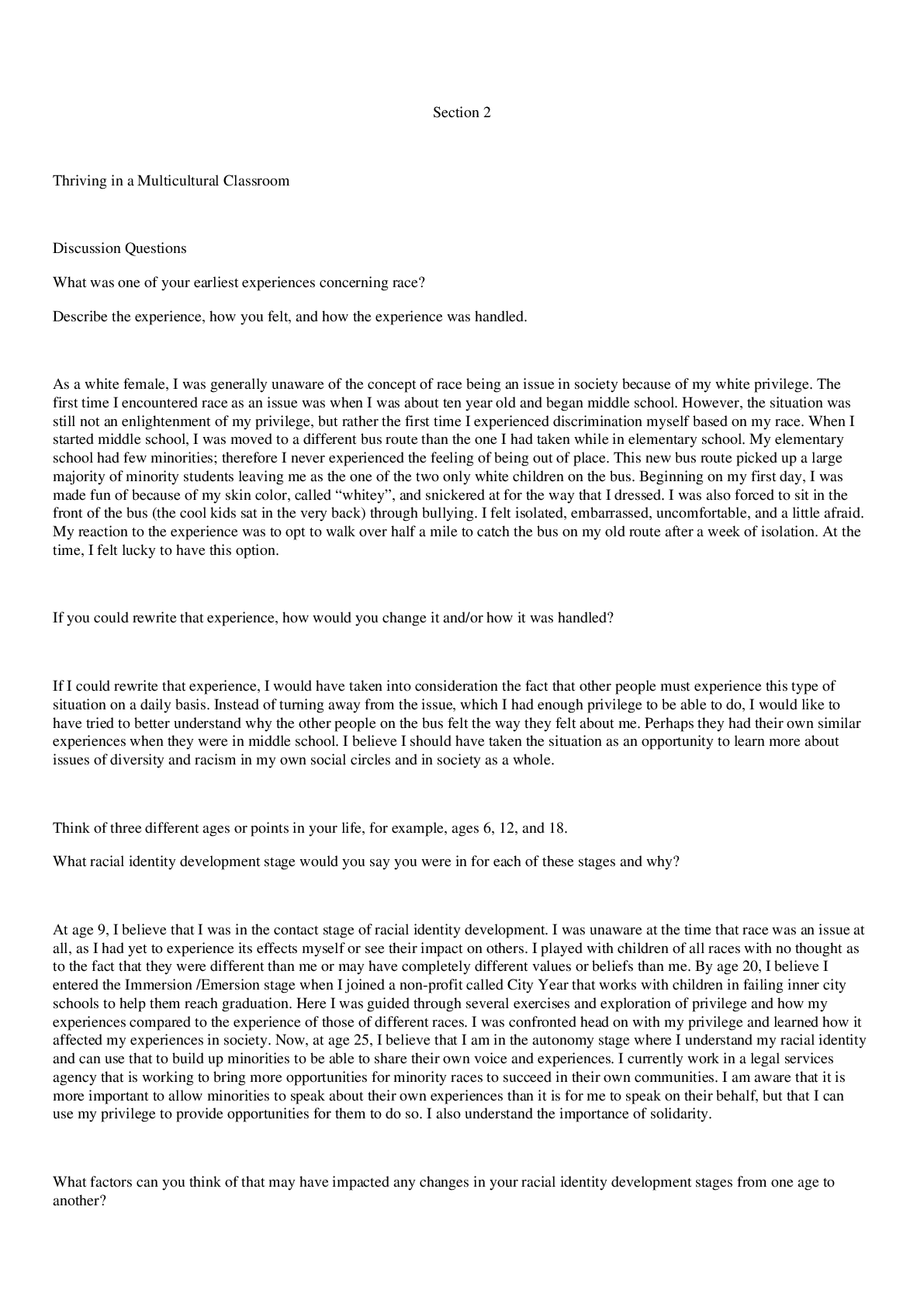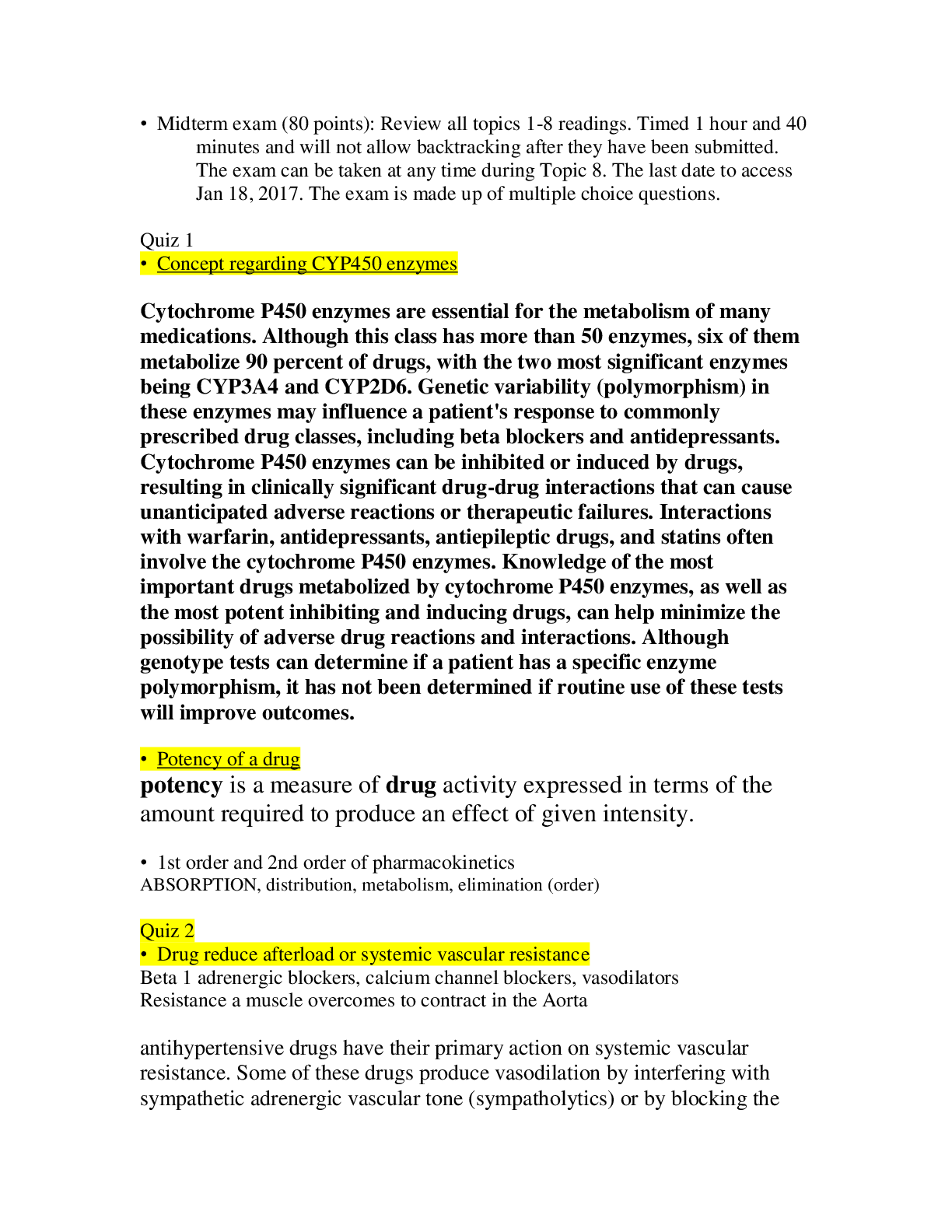*NURSING > STUDY GUIDE > NR_509_week_1_study_guide well graded 100% (All)
NR_509_week_1_study_guide well graded 100%
Document Content and Description Below
1. After completing an initial assessment of a patient, the nurse has charted that his respirations are eupneic and his pulse is 58 beats per minute. These types of data would be. A. Objective B. ... Reflective C. Subjective D. Introspective 2. A patient tells the nurse that he is very nervous, is nauseated and feels hot. These types of data would be A. Objective B. Reflective C. Subjective D. Introspective 3. The patients record, laboratory studies, objective data, and subjective data combine to form the A. Data base B. Admitting data C. Financial Statement D. Discharge Summary 4. When listening to a patients breath sounds, the nurse is unsure of a sound that is heard. The nurses next action should be to A. Immediately notify the patients physician B. Document the sound exactly as it was heard. C. Validate the data by asking a coworker to listen to breath sounds D. Assess it again in 20 minutes to note whether the sound is still present 5. The nurse is conducting a class for new graduate nurses. During the teaching session, the nurse should keep in mind that novice nurses, without a background of skills and experience from which to draw, are more likely to make their decisions using: A. Intuition B. A set of rules C. Articles in journals D. Advice from supervisors 6. Expert nurses learn to attend to a pattern of assessment data and act without consciously labeling it. These responses are referred to as: A. Intuition B. The nursing process C. Clinical knowledge D. Diagnostic reasoning 7. The nurse is reviewing information about EBP. Which statement best reflects EBP? A. EBP relies on tradition for support of best practices B. EBP is simply the use of best practice techniques for the treatment of patients C. EBP emphasizes the use of best evidence with the clinicians experience D. The patients own preferences are not important with EBP. 8. The nurse is conducting a class on priority setting for a group of new graduate nurses. Which is an example of a first-level priority problem A. Patient with postoperative pain B. Newly diagnosed patient with diabetes who needs diabetic teaching C. Individual with a small laceration on the sole of the foot D. Individual with shortness of breath and respiratory distress 9. When considering priority settings of problems, the nurse keeps in mind that secondlevel priority problems include which of these aspects? A. Low self-esteem B. Lack of knowledge C. Abnormal laboratory values D. Severely abnormal vital signs 10. Which critical thinking skill helps see relationships among the data? A. Validation B. Clustering related cues C. Identifying gaps in data D. Distinguishing relevant from irrelevant 11. The nurse knows that developing appropriate nursing interventions for a patient relies on the appropriateness of the ________ diagnosis A. Nursing B. Medical C. Admission D. Collaborative 12.The nursing process is a sequential method of problem solving that nurses use and includes which steps? A. Assessment, treatment, planning, evaluation, discharge, and follow-up B. Admission, assessment, diagnosis, treatment and discharge planning C. Admission, diagnosis, treatment, evaluation and discharge planning D. Assessment, diagnosis, outcome identification, planning, implementation, and evaluation 13. A newly admitted patient is in acute pain, has not been sleeping well lately, and is having difficulty breathing. How should the nurse prioritize these problems A. Breathing, pain, and sleep B. Breathing, sleep and pain C. Sleep, breathing and pain D. Sleep, pain and breathing 14. Which of these would be formulated by a nurse using diagnostic reasoning? A. Nursing diagnosis B. Medical diagnosis C. Diagnostic hypothesis D. Diagnostic assessment 15. Barriers to EBP include: A. Nurses lack research skills in evaluating the quality of research studies B. Lack of significant research studies C. Insufficient clinical skills of nurses D. Inadequate physical assessment skills 16. What step of the nursing process includes data collection by health history, physical examination and interview? A. Planning B. Diagnosis C. Evaluation D. Assessment 17. During a staff meeting, nurses discuss the problems with accessing research studies to incorporate evidence-based clinical decision making into their practice. Which suggestion by the nurse manager would best help these problems? A. Forma committee to conduct research studies B. Post published research studies on the units bulletin boards C. Encourage the nurse to visit the library to review studies D. Teach the nurses how to conduct electronic searchers for research studies 18. When reviewing the concepts of health, the nurse recalls that the components of holistic health include which of these? A. Disease originates from the external environment B. The individual human is a closed system C. Nurses are responsible for a patients health state D. Holistic health views the mind, body, and spirit as interdependent 19.The nurse recognizes that the concept of prevention in describing health is essential because A. Disease can be prevented by treating the external environment B. The majority of deaths among Americans under age 65 years are not preventable C. Prevention places the emphasis on the link between health and personal behavior D. The means to prevention is through treatment provided by primary health care practitioners 20.The nurse is performing a physical assessment on a newly admitted patient. An example of objective information obtained during the physical assessment includes the A. Patients history of allergies B. Patients use of medications at home C. Last menstrual period 1 month ago D. 2.5 cm scar on the right lower forearm 21. A visiting nurse is making an initial home visit for a patient who has many chronic health problems. Which type of data base is most appropriate to collect in this setting? A. A follow-up data base to evaluate changes at appropriate intervals B. An episodic data base because of the continuing, complex medical problems of this patient C. A complete health data base because of the nurses primary responsibility for monitoring the patients health D. An emergency data base because of the need to collect information and make accurate diagnoses rapidly 22. Which situation is most appropriate during which the nurse performs a focused or problem-centered history? A. Patient is admitted to a long-term care facility B. Patient has a sudden and severe shortness of breath C. Patient is admitted to the hospital for surgery the following day D. Patient in an outpatient clinic has cold and influenza-like symptom [Show More]
Last updated: 2 years ago
Preview 1 out of 22 pages
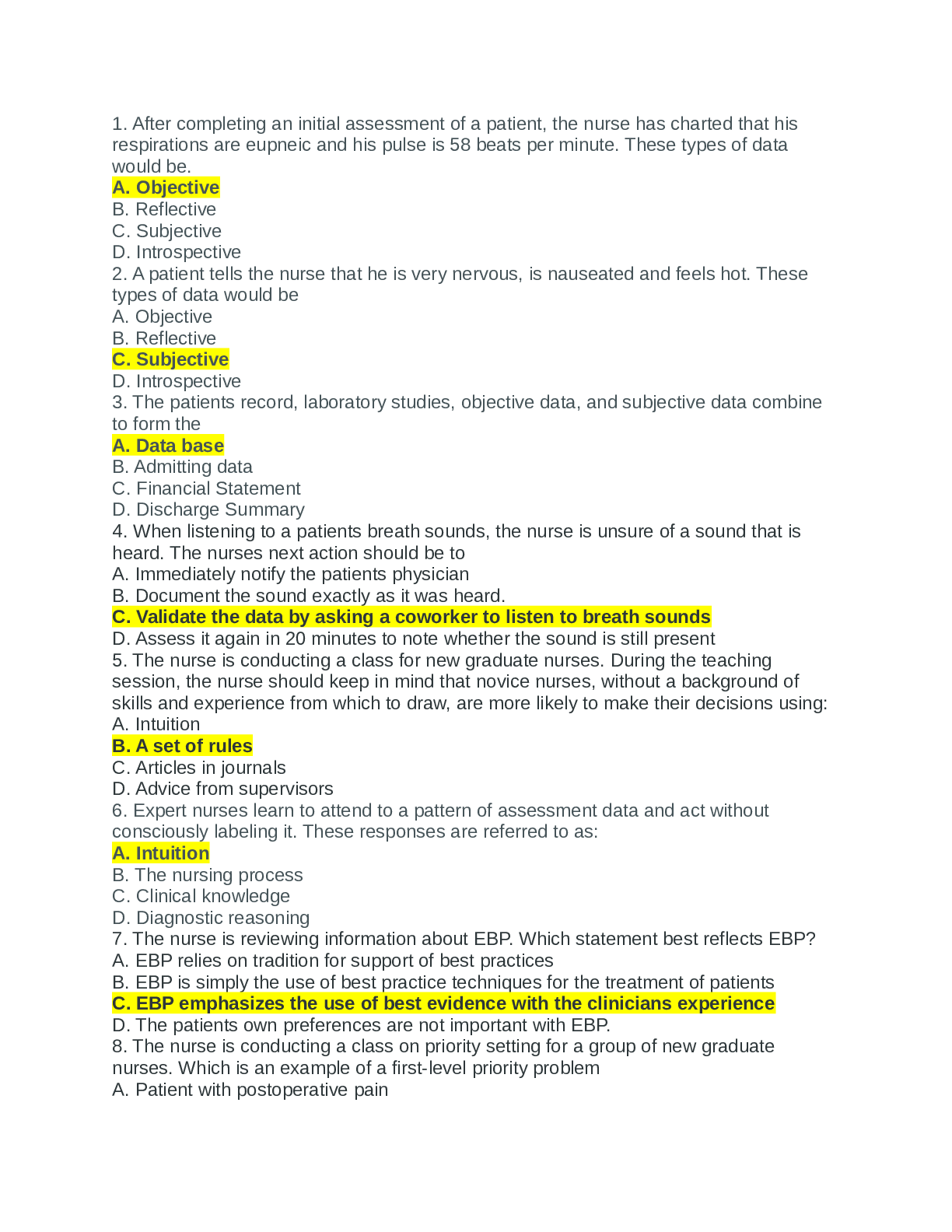
Buy this document to get the full access instantly
Instant Download Access after purchase
Buy NowInstant download
We Accept:

Reviews( 0 )
$12.00
Can't find what you want? Try our AI powered Search
Document information
Connected school, study & course
About the document
Uploaded On
Aug 28, 2021
Number of pages
22
Written in
Additional information
This document has been written for:
Uploaded
Aug 28, 2021
Downloads
0
Views
115








